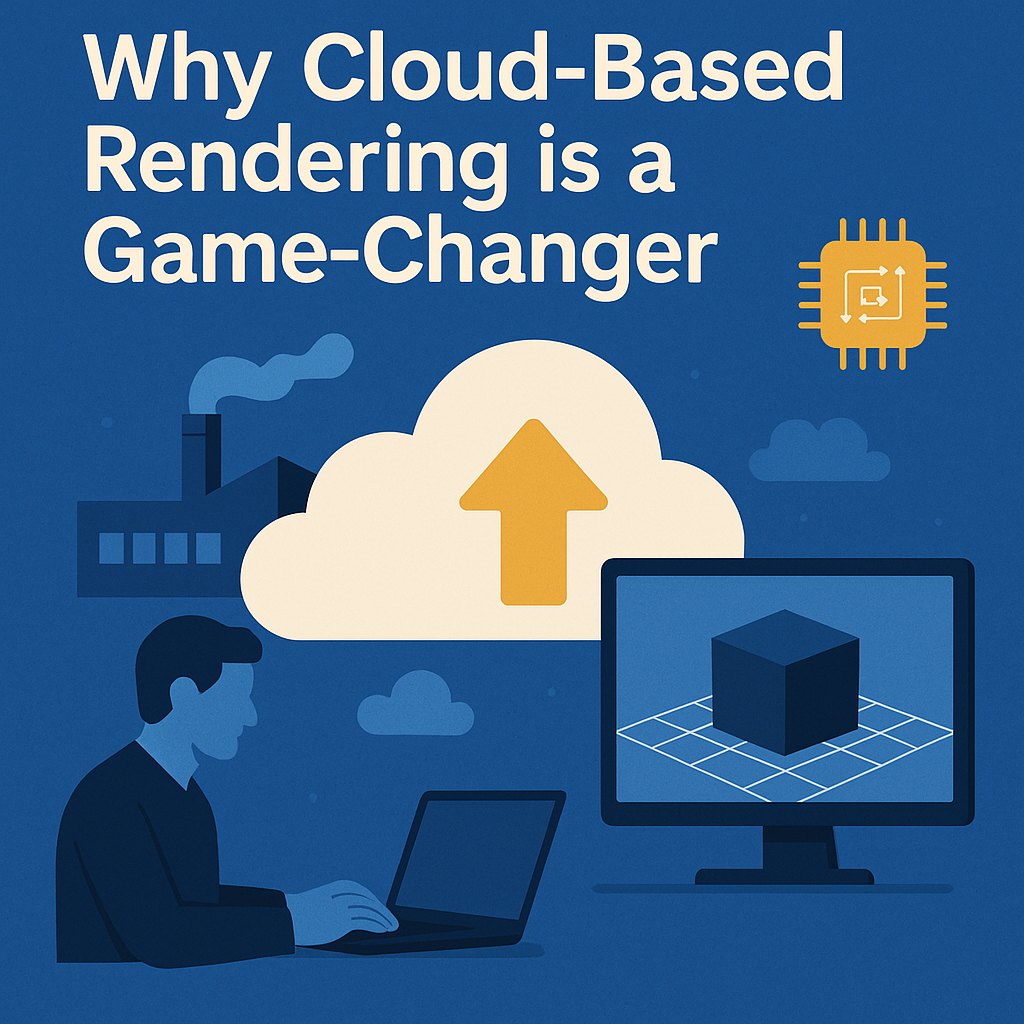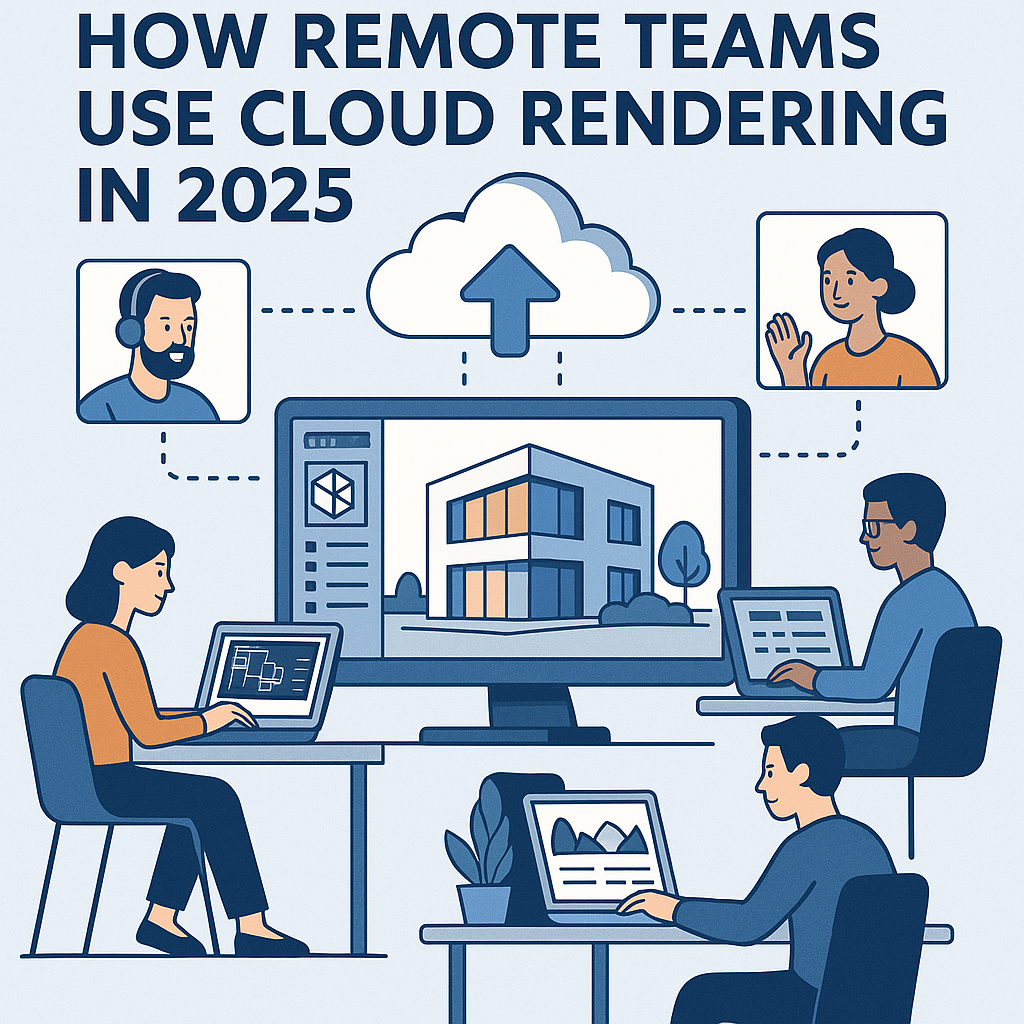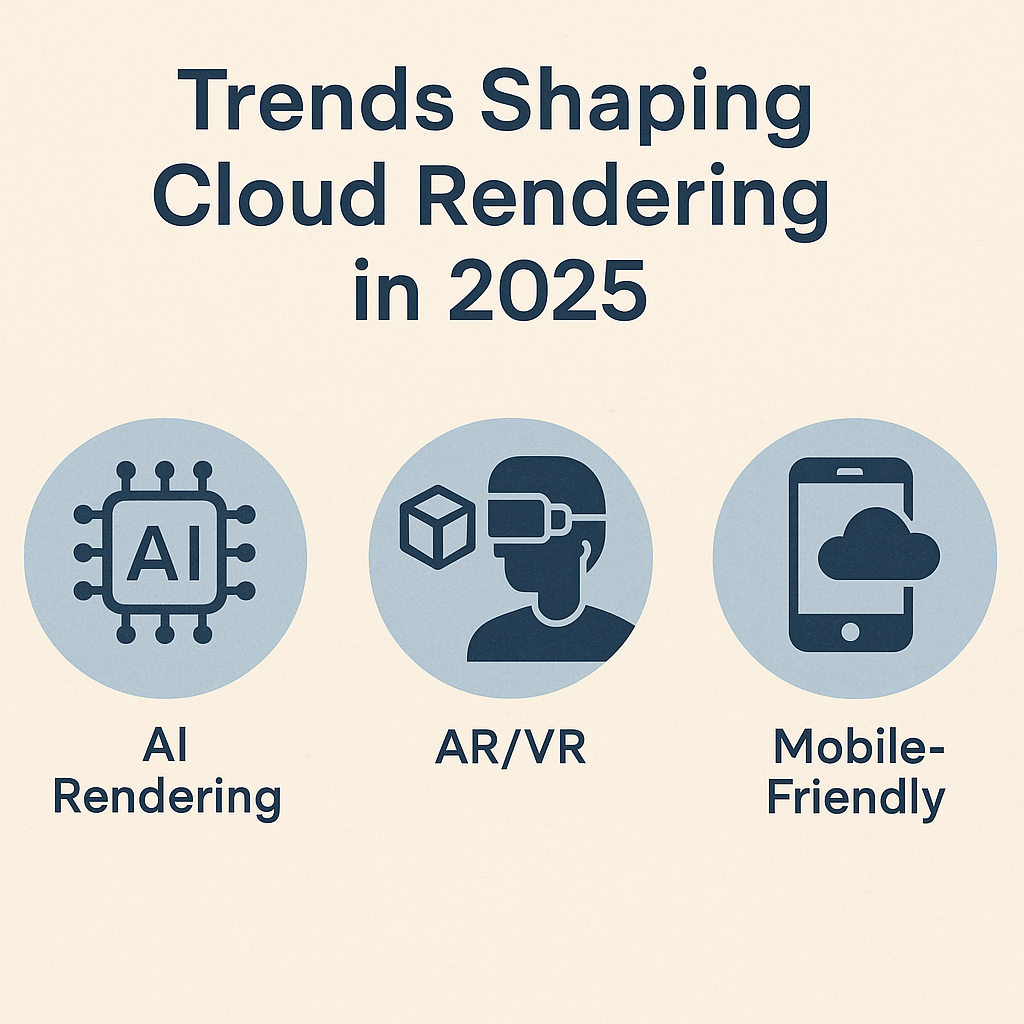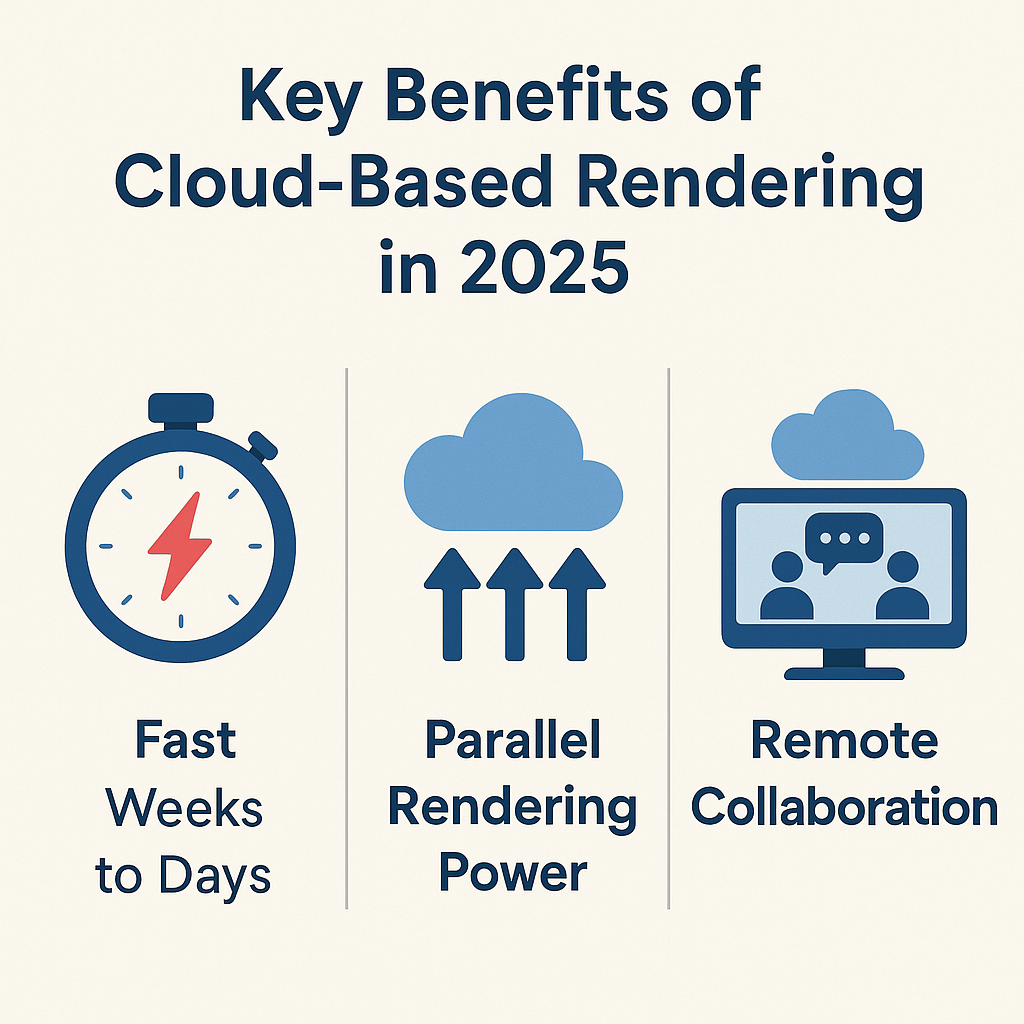The way architects, designers, and developers work has fundamentally shifted. With remote collaboration becoming the new normal, traditional workflows are no longer enough to meet today’s fast-paced project timelines. That’s where cloud-based rendering collaboration steps in-transforming how design teams across different locations work together, review projects, and deliver results.
In 2025, this approach has become a cornerstone of architectural visualisation, allowing firms to embrace global talent, cut costs, and deliver at unprecedented speeds-all without sacrificing quality.

Traditional rendering workflows often relied on local machines, heavy hardware, and endless email chains to share files. The process was time-consuming, costly, and prone to miscommunication. Cloud rendering solves these challenges by offering:
Centralised Access: Everyone works on the same model in real time, regardless of location.
Scalable Power: Cloud servers handle complex renders that would crash local desktops.
Faster Turnarounds: Renders can be queued, processed, and delivered without hardware bottlenecks.
Seamless Collaboration: Teams and clients can review, comment, and make changes instantly.
How Remote Teams Use Cloud Rendering in 2025

1. Real-Time Collaboration Across Borders
Architecture firms increasingly partner with international consultants, designers, and visualisers. With cloud-based rendering platforms, a Sydney-based architect can work seamlessly with a structural engineer in London and a visualisation team in Bangalore-all on the same project files.
Benefits: No version confusion. No delays from sending massive files. Everyone sees updates in real time.
2. Faster Design Iterations
In real estate and development, speed matters. Instead of waiting hours-or even days-for local machines to process a single high-resolution render, cloud systems deliver results in minutes.
Example: A residential developer in Brisbane reviewing apartment interiors can request five different lighting scenarios and get all variations back the same day.
3. Client-Centric Collaboration
Cloud rendering also improves the client experience. Developers, investors, and buyers can access renders and walkthroughs via secure links, adding feedback directly into the platform.
Trends: Interactive 3D models and VR-ready walkthroughs are now shared instantly with stakeholders, making presentations more engaging and decision-making faster.
4. Sustainable Workflows
Running multiple high-power machines locally consumes significant energy. Cloud platforms optimise resources and rely on data centres that are increasingly powered by renewable energy. For firms aiming for green certifications or carbon-neutral operations, this is a critical step forward.
Key Benefits for Architecture Firms
Reduced Hardware Costs: No need to invest in expensive rendering farms or high-end GPUs.
Global Talent Integration: Work with the best teams anywhere in the world.
Scalability: Handle small residential projects or large-scale commercial developments without changing infrastructure.
Faster Client Approvals: Immediate access to variations, walkthroughs, and iterations.
Data Security: Cloud providers now offer enterprise-grade encryption and permissions control, reducing the risk of data leaks.
Trends Shaping Cloud Rendering in 2025

AI-Accelerated Rendering: AI-powered denoising and predictive rendering cut processing times in half.
AR/VR Integration: Teams deliver renders straight into immersive VR platforms for client walkthroughs.
Mobile-First Access: Stakeholders can review and annotate renders directly on tablets or smartphones.
Digital Twin Workflows: Cloud rendering integrates with BIM and digital twin systems, allowing live project updates.
Subscription Models: Pay-as-you-go rendering services make it more affordable for smaller firms.
From Weeks to Days
A mid-sized Melbourne architecture firm working on a mixed-use development previously struggled with long turnaround times on interior renders. After shifting to a cloud-rendering workflow:
- Iteration speed improved by 40%.
- Client approvals came two weeks earlier than planned.
- The ability to present photorealistic visuals faster gave them a competitive edge in pitching and winning new projects.
So how does it work?
Imagine this scenario: a team of designers spread out across the globe is working on a new project. Instead of waiting for each team member to render their individual contributions, they can all work simultaneously in a shared cloud-based platform. As each designer adds their work to the project, the cloud renders the final image or video in real-time, allowing the team to see the results instantly.
Not only does cloud-based rendering collaboration save time, it also allows for more creative freedom and flexibility. Team members can easily make adjustments and see the results in real-time, eliminating the need for endless back-and-forth emails and file sharing. This seamless collaboration not only speeds up the creative process, but also fosters a sense of camaraderie among team members, even if they are miles apart.
In 2025, remote teams will rely more than ever on cloud-based rendering collaboration to streamline their workflow and deliver projects faster. With the ability to work together in real-time, harness the power of the cloud, and bring creative visions to life with lightning speed, the future of digital creation has never looked brighter.
Cloud-Based 3D Rendering Solutions: Speeding Up the Product Development Process
Process Complex Designs Quickly: Handle high-poly CAD or BIM models without overloading local hardware.
Run Multiple Iterations in Parallel: Test different materials, lighting, or configurations at the same time.
Collaborate Globally: Designers, engineers, and marketing teams can access and annotate renders from anywhere.
Reduce Time-to-Market: Faster visual approvals mean quicker prototyping and earlier launches.
The Role of 3D Rendering in Modern Product Development
3D rendering has moved beyond static visuals. Today, it powers the entire product lifecycle:
Concept Stage: Rapidly create visuals to communicate design intent.
Prototyping: Test finishes, colours, and materials before physical samples.
Marketing: Generate high-quality lifestyle images and animations long before the product is manufactured.
Sales Enablement: Offer AR/VR product configurators to engage clients and buyers.
Key Benefits of Cloud-Based Rendering in 2025

Unmatched Speed
Cloud servers process renders exponentially faster than desktop machines. What once took 8–12 hours can now be completed in under one hour, enabling same-day revisions.
Parallel Rendering Power
Need 10 variations of a product in different finishes? Instead of rendering one at a time, cloud platforms allow simultaneous outputs, saving days of work.
Remote Collaboration
Teams no longer need to share massive files via email. Cloud dashboards let stakeholders log in, view renders, and provide comments instantly.
Product Launch Acceleration
Cloud-based 3D rendering streamlines design iterations and approvals, cutting weeks off the development cycle. Faster visuals mean products reach the market sooner, giving businesses a decisive competitive edge.
- 3 days for a single lifestyle render
- 1 week to generate multiple fabric options
- High hardware upgrade costs
After adopting a cloud-rendering workflow with Stedaxis Studio:
- 12 renders were delivered in less than 48 hours
- Interactive 3D configurators were created for the client’s e-commerce launch
- The collection went to market two weeks earlier than planned, boosting pre-orders
Trends Driving Cloud Rendering in 2025
AI-Powered Rendering: Noise reduction and material prediction speed up photorealistic output.
Digital Twin Integration: Products can be updated live as designs evolve.
AR/VR Configurators: Cloud-generated assets feed directly into immersive sales experiences.
Sustainability Focus: Cloud data centres increasingly run on renewable energy, helping brands meet green goals.
Cross-Industry Adoption: From automotive to real estate, cloud rendering is now standard in product pipelines.
Addressing the Hurdles: Speed, Scale, and Strategic Advantage
Even with powerful tools at their disposal, many architects, designers, and developers face recurring challenges in visualisation workflows. Tight deadlines, resource-heavy files, and global collaboration needs can easily derail a project. Cloud-based 3D rendering addresses these hurdles head-on:
Speed: Traditional rendering pipelines often slow projects down, with overnight waits for just a handful of images. Cloud rendering cuts turnaround times dramatically, enabling near real-time previews and same-day revisions. This agility is a game-changer when client decisions hinge on fast approvals.
Scale: Whether it’s a single residential prototype or a large-scale commercial development with hundreds of design variations, cloud platforms can scale instantly. Multiple renders, textures, and lighting scenarios can be processed simultaneously-without overloading local machines or delaying delivery schedules.
Strategic Advantage: Speed and scale translate into more than just efficiency. They create a strategic edge in competitive markets. For product manufacturers, it means hitting store shelves earlier. For developers, it means securing pre-sales before construction begins. For architects, it means winning pitches with visuals that impress stakeholders.
Enhanced Visual Effects and Lighting: One of the most powerful advantages of cloud-based rendering is the ability to push visual quality to new heights without worrying about local hardware limitations.
Photorealism at Scale: Complex lighting setups-sun studies, reflections, shadows, and artificial lighting-can be simulated with greater accuracy, bringing designs closer to how they will look in reality.
Dynamic Environments: Cloud rendering platforms handle effects like moving light sources, weather conditions, or seasonal variations seamlessly, helping architects and developers showcase projects in multiple contexts.
Cinematic Presentation: For high-stakes pitches or marketing campaigns, enhanced effects such as depth of field, glare, and global illumination give renders the cinematic polish that captures attention
Accelerated Rendering Techniques: Speed remains the biggest bottleneck in traditional rendering. Waiting hours-or days-for outputs often forces teams into tough trade-offs between detail and delivery. Cloud-based rendering flips this challenge on its head.
Parallel Processing: Complex render jobs are broken into smaller tasks and distributed across multiple high-performance servers, drastically reducing turnaround times.
On-Demand Scalability: Whether rendering a single perspective or hundreds of variations, cloud infrastructure scales instantly to meet demand.
Iterative Design Made Easy: Faster previews mean more design iterations, tighter client feedback loops, and better final outcomes-without sacrificing deadlines.
How Stedaxis Studio Empowers Remote Collaboration
At Stedaxis Studio, we’ve integrated cloud-based rendering into our core workflow, helping firms and developers across Australia and beyond to:
- Deliver photorealistic residential and commercial renders in record time.
- Collaborate with remote teams through secure, cloud-hosted project dashboards.
- Provide VR/AR-ready outputs for immersive stakeholder engagement.
- Scale seamlessly from boutique projects to large-scale urban developments.


